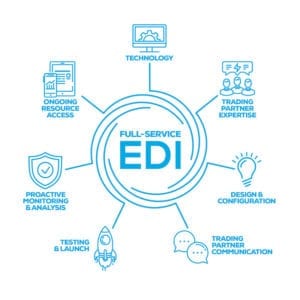Third era of retail: Complexity evolving, but fundamentals endure
The history of retail today is a microcosm of modern American history. Everything we’ve accomplished as a nation in industry, transportation and technology, we see happening on a similar scale in retail. When you understand the evolution of the retail industry, you will be better prepared to reach new and returning customers and why certain techniques and tactics no longer work. You will also see evidence of the tried and true making a comeback.
I talked about this historical progression of retail in my keynote speech for the SPS Commerce In:fluence 2017 event and in previous interviews, and I feel a message worth repeating, especially as the complexity of retail continues to change: The core fundamentals of achieving success in retail are still relevant today.
1) Location. Location. Location.
In the early days of retail, before modern transportation and highway systems, the merchant with the best location always won the commerce game. If you had a small grocery store in the middle of the town square, you were the de facto grocery store. The dry goods store in the center of town was the only place to buy material to make clothes or get your tools. The local auto repair shop everybody went to was easy to access as it sat in the center of other commerce and drop-off and pick-up was close to where you work. And it didn’t matter how high the prices were, you paid them because it was convenient, and it was where the people gathered. If the store had the right location, chances are the family who ran it was one of the richest families in town.
If you lived in the big city, it didn’t matter if there were any competitors in town. Chances are your store was the big winner because it was within a two- to four-mile radius of a highly-populated area and was easily accessible. Back then, people didn’t have the same transportation options we have today. The merchants didn’t have to do any merchandising or marketing, and prices weren’t a big concern. Even when cars and highways came along, people generally didn’t commute to shop, except for specific reasons and special occasions. You went to the closest market for produce, visited the closest butcher for meat, and the closest baker for bread (or made your own).
2) The Era of Retail Malls and Big Boxes
The era of retail malls, Walmart and Target changed everything in retail, in their own ways. Now, people had choices and options. They were also more mobile with modern transportation. They could drive to find cheaper prices and experience the choice offered in department stores and malls, so price and choice became a factor for shoppers. Larger stores and malls offered more of everything all under one roof. Why drive to three or four different stores, when you could do one-stop shopping and have options? Why be forced to pay high prices for limited selection and waste a full day going from specialty store to specialty store?
When Walmart expanded its footprint across the country, it changed the pricing landscape so drastically that merchants went out of business trying to keep up with the low-priced giant. Walmart became an operational savant and used their process precision, negotiation, and buying power to improve profits. The savings in buying bulk and price negotiation were passed on to their customer. Win-win for everyone, but especially the consumer! Once products hit the shelf, they sold quickly, because the stores were big, convenient and open 24 hours every day – volume drove the business.
While Walmart was focused on competitive pricing, Target focused on merchandising, compelling point of purchase strategies, and delivering a more appealing consumer shopping experience. That whole joke about going in to buy one thing, but leaving with a $100 cartful exists for a reason. They widened their aisles by 50 percent and invested twice what Walmart spent on lighting up their stores. They even asked well-known brands and designers to create exclusive merchandise for them, such as KitchenAid, knowing consumers were willing to pay a few extra dollars for a premium option.
Rather than trying to be everything to everybody, Target concentrated on reaching the people who made $50,000 a year or more. They were successful, because they didn’t compete on price with Walmart. Instead, they ran alongside them and won market share by targeting their ideal customer. Market segmentation, merchandising and savvy marketing become Target’s silver bullet while Walmart continued to thrive knowing the needs of their consumer who was motivated by price.
3) The Era of Amazon and Unified Omnichannel
In the third and present era of retail, the Internet and mobile technology changed the entire world. Now, thanks to Amazon and e-commerce, you not only have to focus on having the right price, you must excel at online merchandising and win in the complex world of omnichannel. Retailers died overnight not seeing this change catalyst coming.
There is a secret sauce, a recipe for success, at winning in retail. And it’s complicated.
First, you take a page from Walmart’s playbook, and make sure you have are exceptional operationally from a highly-efficient supply chain to innovative product sourcing. You must build strong trading partner relationships and be great at logistics to get the inventory you need and negotiate hard to drive pricing to the lowest possible point.
Next, you take inspiration from Target’s success, and deliver engaging merchandising and an intuitive and positive consumer experience. Navigating the store draws on common sense (put the laundry soap near the dishwasher soap and offer shops within a store built on brands we know and love. Smart move leveraging the success of the TV show Fixer Upper and the Stars Chip and Joanne to create Hearth and Home: Magnolia within Target’s household area. Merchandising brilliance drives unplanned purchases and pulls at our wants, not just our needs. Suddenly, your quick stop for laundry detergent, milk and a new phone charger has turned into a $100 stab at home renovation.
Finally, there’s that Amazon effect that disrupted retail, accelerated consumer expectations, and turned over the apple cart in the retail supply chain. Amazon created and delivered on the consumer’s desire to get whatever they want, whenever they want and however they want it at a perceived better price. Amazon pretty much has everything (endless product and brand options, and merchandising) at rock bottom prices (supply chain) and goods can be delivered right to people’s doorsteps, often for free and within two days when you have Amazon Prime or you can now visit an Amazon or Amazon-owned store brick and mortar store (omnichannel). Amazon is on well on its way to achieving a truly unified omnichannel organization.
Fundamentals Endure: What Was Old Is New Again
Time is linear, but history is cyclical. We’ve come full circle and “location, location, location” remains a critical success factor, as is great merchandising and positive consumer experiences, and supply chain efficiency.
Not only are small specialty retail stores popping up again — and the acid test is Amazon dipping its toe in retail storefronts — we’re gaining granular insights on product inventory and placement on a regional, local, and store level, thanks to our point-of-sale analytics capabilities. This is enabling retailers to meet the needs of the consumer-driven buy local and farm-to-table movements as well as maintaining inventory for national consumer branded products. We can empower buyers with on-the-spot analytics and strategies for purchasing regional and local preferences, plan for weather and logistics impacts, and other customer-related factors.
The technology changes in retail are inspiring a whole wave of retailer innovation to unify efforts across all digital and brick and mortar storefronts, compete and win in the new reality.
Physical locations are now a huge advantage for traditional stores trying to make it in the digital age. With so many product and multiple locations, retailers should take advantage of their brick-and-mortar stores and enhance the consumer experience with their online strategy. Pursue ship-to-store, ship-from-store, buy online pickup in store (BOPIS or BOPUS), delivery lockers and other methods to get goods in the hands of customers. Stores are also enabling a better consumer experience with built-in centers for online order returns, exchanges and refunds.
The secret to retail success today requires you engage consumers and market with a true omnichannel offering that leverages e-commerce, social media, bricks and mortar stores, and every channel in between to reach new customers and build preference for existing customers. Make it easy, fast, convenient and consistent in how you deliver brand through consumer-focused shopping experiences.
Across the retail ecosystem, the assumption that consumers are motivated by price appears to be shifting. Yes, price is a factor, but so is effective merchandising and offering products consumers want. Even more vital is the elevation of omnichannel as a growth strategy central to building the business, not just a sales and delivery “project” to tackle.
We are now entering a new era of retail where the industry is moving beyond omnichannel into the age of Unified Retail. In this new reality where consumer behavior and expectations are driving the evolution and future of retail, the “old school” retail basics of location, location, location; effective merchandising; and supply chain efficiency are right up there with Unified Omnichannel.
Welcome to the era of Unified Retail.
Follow SPS Commerce on Facebook, LinkedIn and Twitter. You can also get retail and supply chain news, resources, expert tips and other valuable updates delivered directly to your inbox weekly for free by subscribing to the SPS blog.

Find the correct EDI solution for your business.
Get more insights on full-service EDI by downloading our white paper.
READ OUR WHITE PAPER- Automated Data Speeds Up 3PL Warehouse Operations - March 14, 2024
- Evaluating Your EDI Options: 7 Building Blocks of Full-Service EDI [White Paper] - February 28, 2019

RELATED POSTS
Tackling omnichannel order management...
Three common challenges 3PLs face and...
Create retail branded packing slips f...